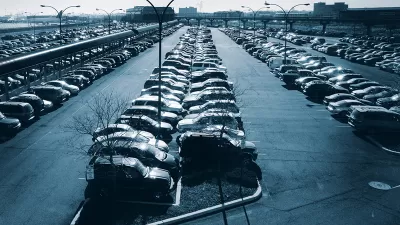Quebec is notorious for its lavish subsidies designed to lure business. But with transparent accounting and a cost-benefit ratio of 3.74 to 1, the province's economic development agency makes sure taxpayers know what they are getting for their money.
In his latest column, economic development consultant David Campbell praises Investissement Québec's accounting of its activities -- which he argues helps silence critics of economic development subsides.
"Within the economic development community in Canada, Quebec has the reputation of being the 'bad boy'. It is known to outbid other provinces with grants, loans and tax credits to attract industry and is very aggressive in its promotion of the province to international businesses. But one thing I appreciate about Investissement Québec (the lead agency promoting the province to international business) is its transparency and accountability regarding public monies invested in economic development.
Reporting on the results of economic development activities has become an exercise in obfuscation in many provinces. We are told about the number of 'jobs retained' by economic development activities without ever receiving a viable definition of that term. We are told about 'jobs created' without being informed of whether the jobs will be created now or in future. We are rarely told about the salaries of the jobs attracted to the province and almost never will you see information on the incremental taxes generated directly from the economic development activities of the province. Most economic development agency annual reports talk about activities such as capacity building, promotion and industry sector-building. I am not sure why they even report on that stuff. To me, that is reporting process - not outcome.
Imagine if a private sector company wrote a 100-page annual report talking about new promotional activities, new product development and new facilities and never mentioned revenues or profitability? Most economic development agencies do just that."
"In Quebec, however, things are reported differently. Despite offering the most lucrative business incentives in Canada, Investissement Québec claims to have a cost-benefit ratio of 3.74 to 1. In other words, for each tax dollar spent by the Quebec government it collected $3.74 in tax and incidental tax revenues."
"Investissement Québec keeps track of all of the companies it has attracted to the province (and investments in Quebec-based firms) and estimates each year the tax benefits to the province from that activity. Some might argue with the methodology used by Quebec to estimate tax and employment activity, but that's not the point. The point is, this is the clearest way to measure the success of a provincial economic development agency and I believe all provincial and state governments should develop similar cost-benefit models."
FULL STORY: Accountability in economic development

Alabama: Trump Terminates Settlements for Black Communities Harmed By Raw Sewage
Trump deemed the landmark civil rights agreement “illegal DEI and environmental justice policy.”

Planetizen Federal Action Tracker
A weekly monitor of how Trump’s orders and actions are impacting planners and planning in America.

The 120 Year Old Tiny Home Villages That Sheltered San Francisco’s Earthquake Refugees
More than a century ago, San Francisco mobilized to house thousands of residents displaced by the 1906 earthquake. Could their strategy offer a model for the present?

LA’s Tree Emergency Goes Beyond Vandalism
After a vandal destroyed dozens of downtown LA trees, Mayor Karen Bass vowed to replace them. Days later, she slashed the city’s tree budget.

Sacramento Leads Nation With Bus-Mounted Bike Lane Enforcement Cameras
The city is the first to use its bus-mounted traffic enforcement system to cite drivers who park or drive in bike lanes.

Seattle Voters Approve Social Housing Referendum
Voters approved a corporate tax to fund the city’s housing authority despite an opposition campaign funded by Amazon and Microsoft.
Urban Design for Planners 1: Software Tools
This six-course series explores essential urban design concepts using open source software and equips planners with the tools they need to participate fully in the urban design process.
Planning for Universal Design
Learn the tools for implementing Universal Design in planning regulations.
Ada County Highway District
Clanton & Associates, Inc.
Jessamine County Fiscal Court
Institute for Housing and Urban Development Studies (IHS)
City of Grandview
Harvard GSD Executive Education
Toledo-Lucas County Plan Commissions
Salt Lake City
NYU Wagner Graduate School of Public Service





























